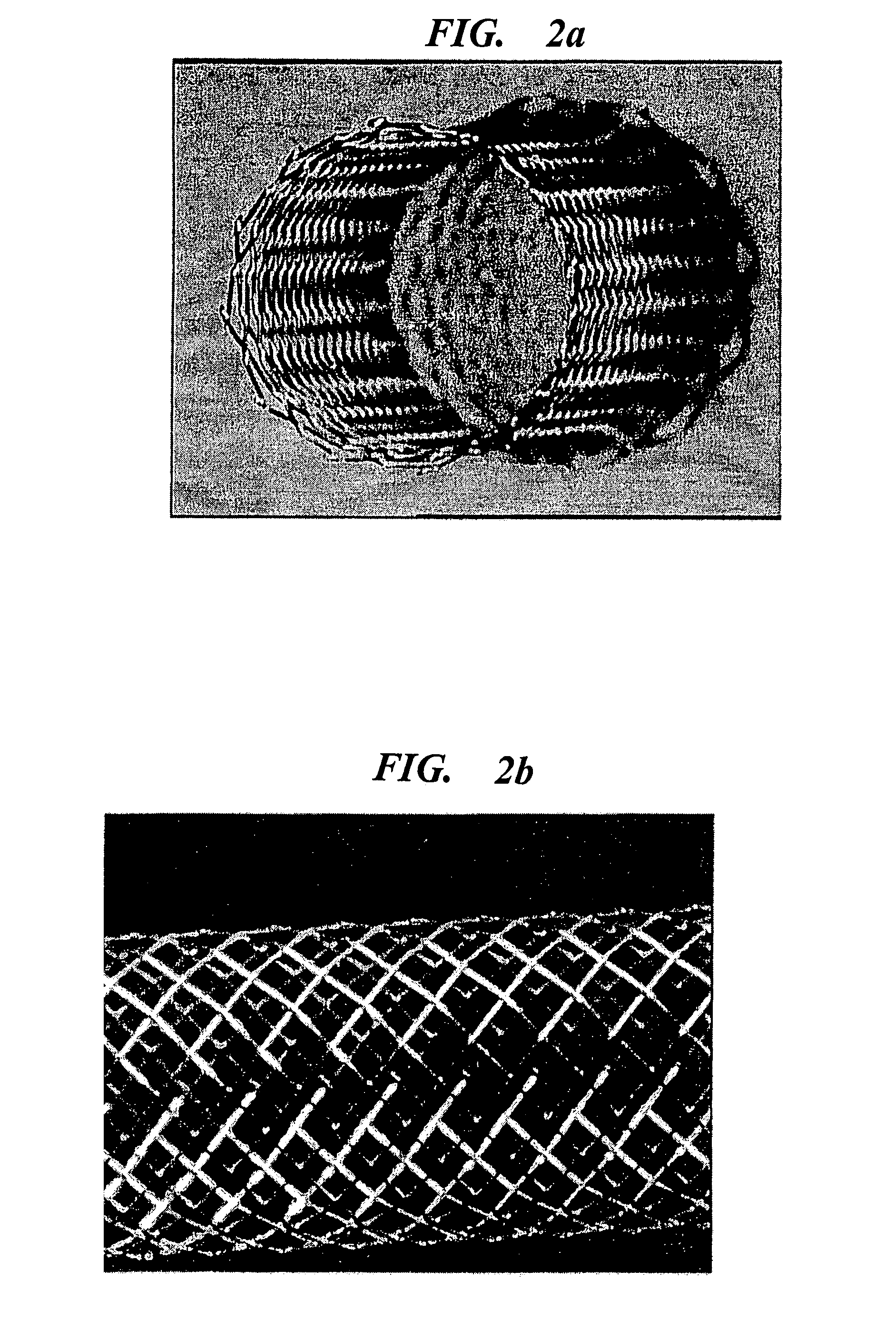Braided composite prosthesis
a composite prosthesis and brad technology, applied in the field of brad composite prosthesis, can solve the problems of limiting the type of materials that can be interbraided into the device, difficult to provide a device, etc., and achieve the effect of preventing this kind of damage to the textile strand, preventing impact, and desired strength and resiliency
- Summary
- Abstract
- Description
- Claims
- Application Information
AI Technical Summary
Benefits of technology
Problems solved by technology
Method used
Image
Examples
example 1
[0077]The bobbins of a braider carrier assembly are loaded with seventy-two textile filaments, each being a 100 denier polyester yarn composed of seventy filaments. At every third carrier around the braider, a structural strand is wound for co-braiding with the multifilament yarn, to provide twelve structural strands in each of two opposite winding directions. Each structural strand is an Elgiloy wire having a diameter of 0.0043 inches (0.11 mm). The strands are braided in a two over two braiding pattern onto an 8 mm diameter round mandrel, with the braider operated to determine a braid angle of 110°. The braid is formed to an adequate length, then removed from the mandrel.
[0078]The resulting interbraided structure, shown in FIGS. 11a and 11b, is a tubular composite of the polyester yarn and metal monofilaments. The wire latticework is formed as two sets of oppositely directed helices, with the wires in a two over two braided pattern.
example 2
[0079]Again, carrier bobbins are loaded with seventy-two polyester yarns of 100 denier and seventy filaments. A 0.0043 inch diameter Elgiloy wire, provided at every. fourth carrier, is co-braided with the multifilament yarn to provide nine wires in each of two opposite winding directions. The strands are braided in a two over two braiding pattern on an 8 mm diameter round mandrel. The result, pictured in FIG. 12, is a tubular interbraided structure of polyester yarn and metal monofilaments. The wire substructure consists of two concentric sets of oppositely directed helices, not interbraided but overlying one another.
example 3
[0080]The carrier bobbins are loaded with seventy-two 100 denier polyester yarns formed of seventy filaments. A 0.0043 inch diameter Elgiloy wire is loaded at every other carrier around the braider in only one of two opposite winding directions, for a total of eighteen wires co-braided with the multifilament yam. The strands are braided on an 8 mm diameter round mandrel in a two over two braiding pattern, with the braider set to form a braid angle of 110°. The result (FIG. 13) is a hollow tubular interbraided structure of polyester yarn and metal monofilaments. The wire substructure consists of a single layer of eighteen axially spaced helices in one winding direction.
PUM
 Login to View More
Login to View More Abstract
Description
Claims
Application Information
 Login to View More
Login to View More - R&D
- Intellectual Property
- Life Sciences
- Materials
- Tech Scout
- Unparalleled Data Quality
- Higher Quality Content
- 60% Fewer Hallucinations
Browse by: Latest US Patents, China's latest patents, Technical Efficacy Thesaurus, Application Domain, Technology Topic, Popular Technical Reports.
© 2025 PatSnap. All rights reserved.Legal|Privacy policy|Modern Slavery Act Transparency Statement|Sitemap|About US| Contact US: help@patsnap.com



